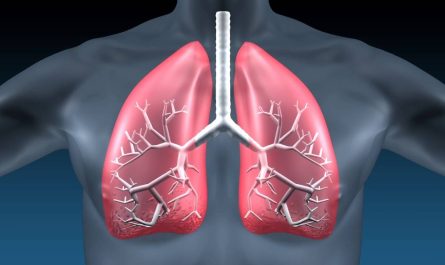Introduction
Over the past few decades, there have been immense advancements in medical technology that have revolutionized patient care. From diagnostic imaging machines to ventilators and infusion pumps, modern hospitals utilize a vast array of computerized medical devices to monitor and treat patients. However, one major limitation of these devices has been their inability to seamlessly share data with each other and with electronic health records (EHRs). Medical device connectivity or integration aims to bridge this gap by allowing biomedical equipment to communicate digitally. This article explores the importance of medical device connectivity and its potential to enhance various aspects of healthcare delivery.
Enabling Interoperability Between Devices and Systems
One of the core objectives of medical device connectivity is to facilitate seamless sharing of clinical data between different pieces of equipment at the point of care. Currently, most medical devices function as isolated systems unable to exchange valuable patient information electronically with other relevant technologies. This siloed nature of data storage poses many clinical and operational challenges for caregivers. Installation of centralized medical device connectivity platforms can help overcome this by enabling bi-directional transfer of parameters, readings, timestamps and alarms between all networked medical devices in real-time.
This interoperability allows clinicians to get a unified view of a patient’s condition from any networked workstation without needing separate logins or manual transcription. Integrated clinical monitoring and flexible device control also become feasible when devices can communicate with each other digitally. For example, anesthesia machines could share respiratory data with ventilators to ensure synchronized ventilation. Such seamless exchange of machine-generated clinical insights is critical for coordinated, evidence-based care delivery.
Transforming Patient Monitoring with Connected MDCs
One arena where medical device connectivity promises to deliver transformative benefits is patient monitoring. Modern multi-parameter patient monitors equipped with wireless connectivity capabilities allow centralized continuous observation of multiple patients simultaneously from any location. With integrated physiological tracking technologies like ECG, respirations, blood pressure etc., these connected monitors deliver comprehensive clinical overviews on large display units.
Additionally, their ability to transmit real-time parameters and alarms electronically removes the need for cumbersome manual record keeping. Any deviations beyond set thresholds are instantly conveyed to ensure timely clinical intervention. Bedside caregivers too can remain wire-free with the flexibility to access patient vitals from mobile devices. Comprehensive electronic documentation of longitudinal patient trends also becomes possible. Overall, connected monitoring helps maximize both safety and efficiency of monitoring workflows.
Facilitating Data Migration to EHRs
One of the main goals of medical device connectivity is to enable automated, structured migration of machine-generated clinical data into electronic health records (EHRs) for comprehensive documentation and longitudinal tracking. Currently medical devices tend to store parameters and readings in proprietary, non-standard formats. Manual abstraction of this information or using generalized reports makes for incomplete and inaccurate records.
Integration of medical devices via standardized interoperability frameworks and common data models allows automatic ingestion of device data streams into the EHR framework. This population of EHRs with device-sourced physiological metrics, procedural details, diagnostic scans and treatment parameters aids more informed clinical decision making. It also supports population health management by offering deeper insights on historical trends, responses to therapies and long term outcomes. Connectivity thus holds the promise of transitioning healthcare towards a data-driven, value-based model.
Enhancing Remote Patient Monitoring
The rise of telemedicine and remote patient monitoring as viable alternatives has been accelerated during the COVID-19 pandemic. However, lack of Medical Device Connectivity has been a key limitation as it hinders comprehensive remote observation. Integrating home healthcare devices to centralized connectivity platforms using technologies like Bluetooth and wireless connectivity protocols opens up new opportunities.
Continuous sharing of readings from connected glucometers, spirometers, pulse oximeters, blood pressure monitors and other home use diagnostics allows clinicians to regularly track high-risk patients recovering at home. Early detection of deterioration through integrated alarms is feasible even when physical examinations are not possible. This bidirectional exchange of timely clinical insights enhances safety of remote care delivery. It also empowers patients to proactively engage in self-management with guidance from clinicians. Medical device connectivity hence plays a pivotal role in advancing virtual care models.
Enhancing Inventory Management and Supply Chain Visibility
Seamless device to device communication also enables optimization of inventory management functions for healthcare providers. Accurate tracking of equipment utilization helps administrators gauge actual needs against available stock in each clinical area more precisely. Automated replenishment based on predefined usage thresholds and alerts regarding devices requiring servicing or preventive maintenance become possible.
Connectivity solutions further aid visibility through detailed equipment life-cycle documentation. Integrated tagging using technologies like RFID additionally supports traceability of individual assets and consumables across the entire supply chain. This enhances overall supply chain efficiency by minimizing overstocking and reducing operation costs associated with expired or impaired equipment and supplies across the organization. It also aids compliance with regulations for auditable record-keeping.
Challenges and the Road Ahead
While the promise of medical device connectivity is immense, its successful implementation at scale also presents technical, procedural and financial challenges. Ensuring seamless interoperability between devices from different manufacturers with disparate protocols requires adherence to consensus communication standards. Certification of new connected applications and upgrades pose regulatory hassles too.
Data security vulnerabilities arising from centralized networks and remote access also need proactive mitigations. Sustaining connectivity Infrastructures demands ongoing investments which many healthcare systems may not be prepared to support initially. Stakeholder buy-in and optimal change management will play a key role in overcoming adoption hurdles. Device Original Equipment Manufacturers also need to focus on delivering future-ready platforms with open architecture.
*Note:
1.Source: Coherent Market Insights, Public sources, Desk research
2.We have leveraged AI tools to mine information and compile it


